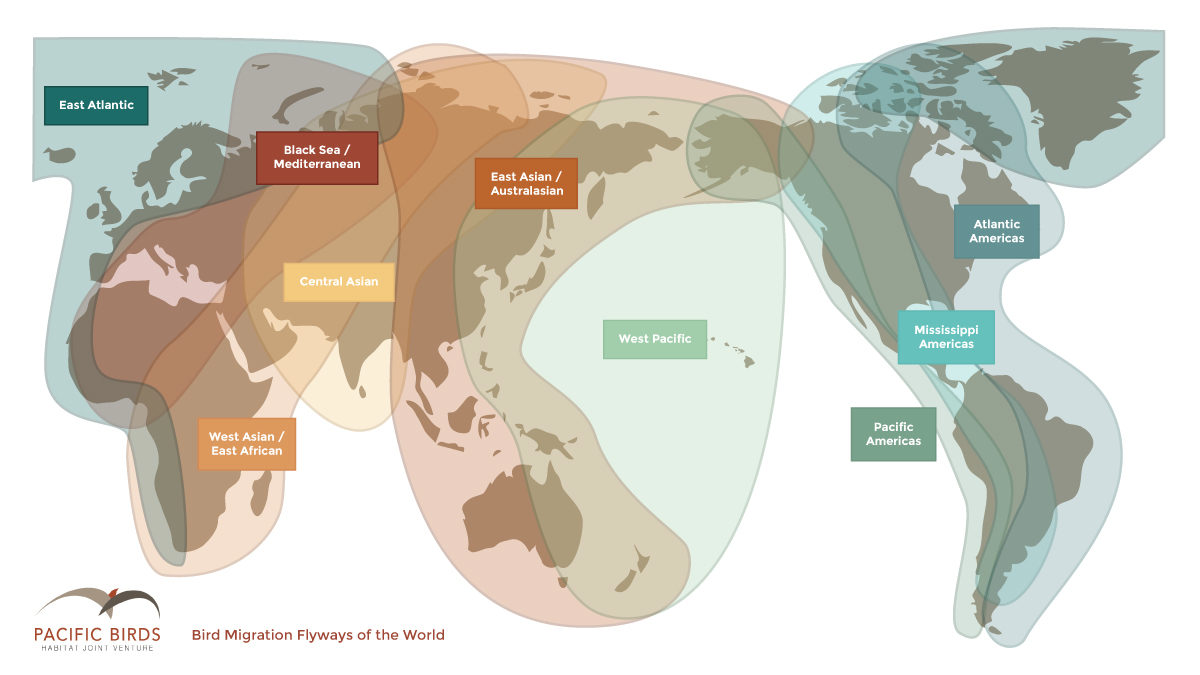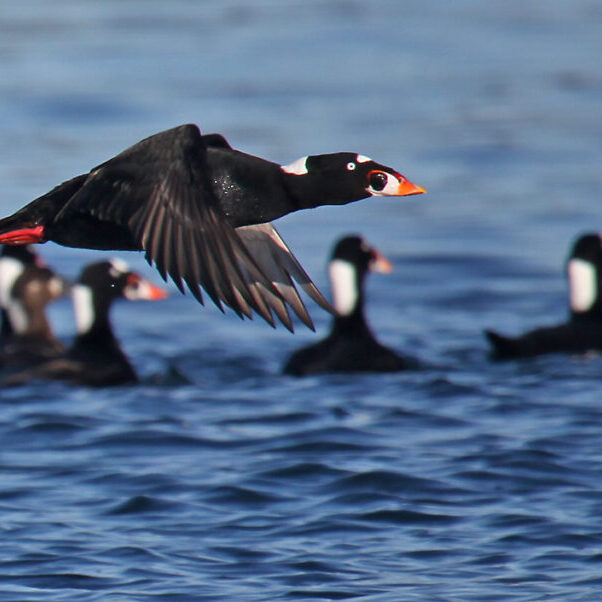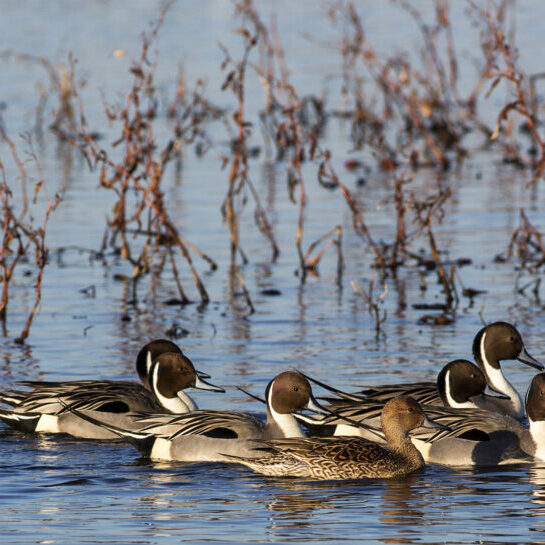Flyways—the life giving, ancient pathways for birds from their breeding grounds to wintering areas—are an integral part of the bird migration story.
The Pacific Americas Flyway, spanning from Alaska to the tip of South America, supports millions of migratory birds. Western Sandpiper, Pacific Loon, Pacific Brant, and hundreds of other species follow this general north-south route in spring and fall. Some of our other breeding birds, such as Sandhill Crane, Lesser Scaup and Greater White-fronted Goose, migrate further to the east along the Central or Mississippi Flyways.
The Bar-tailed Godwit, Pacific Golden-Plover, and Bristle-thighed Curlew, among others, take a different route and travel the West Pacific and East Asian-Australasian Flyways. These journeys take them across vast stretches of the Pacific Ocean.
World Flyway Map

Some birds cannot be pinned down to one or even two flyways. The Blackpoll Warbler breeds in the boreal forest, then migrates east across Canada before dropping south to the Atlantic Ocean and over to South America, and the Northern Wheatear visits both Alaska and Africa during its annual migration.
Wherever they land, birds need healthy habitats to sustain them. Pacific Birds is working with partners to assess where those habitats are and to identify the key conservation actions that will allow our birds to continue making their epic migrations.
Flyway News
Wandering Tattlers Are Working Their Way North
While millions of birds are winging their way north via the Pacific Americas Flyway, the Wandering Tattler uses at least one additional flyway, traveling the vast Pacific to reach northern breeding areas.
Key Sites for North American Sea Ducks Identified in New Atlas
Sea ducks are a unique group of waterfowl that inhabit arctic, subarctic, boreal, and coastal habitats. A new tool, the Sea Duck Key Habitat Sites Atlas, can help inform conservation partners about where conservation actions are most needed.
Drought and Ducks in the Pacific Flyway
We sat down with Dr. Mark Petrie of Ducks Unlimited to learn more about the potential impacts of drought on waterfowl (and other birds) along the Pacific Flyway. Three areas heavily used by birds during migration or winter have been in severe drought for years, affecting habitat conditions and food supplies.



